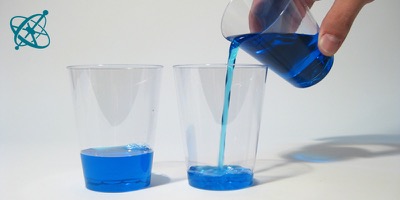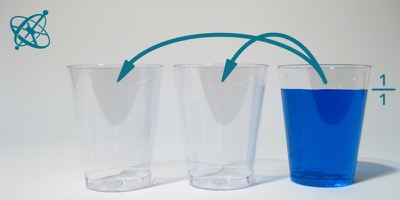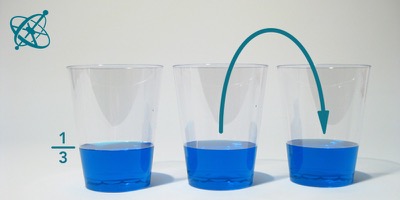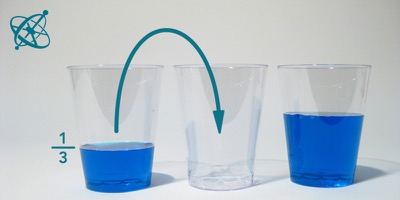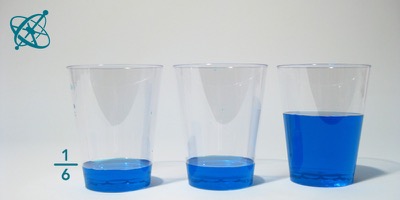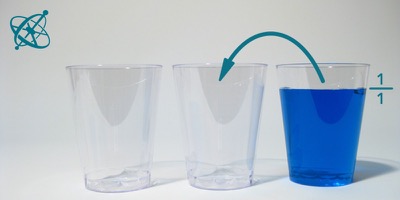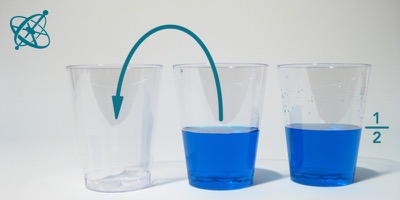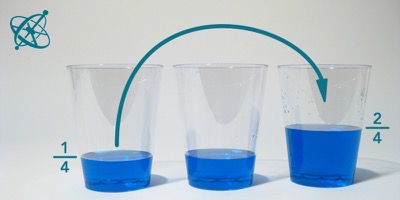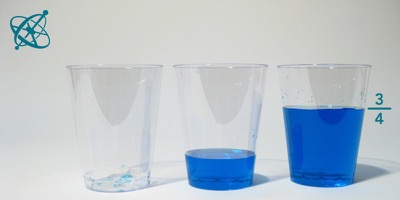 www.sciensation.org | Ciênsação hands-on experiments are published as Open Educational resources under a Creative Commons Attribution-ShareAlike 4.0 International License.
www.sciensation.org | Ciênsação hands-on experiments are published as Open Educational resources under a Creative Commons Attribution-ShareAlike 4.0 International License.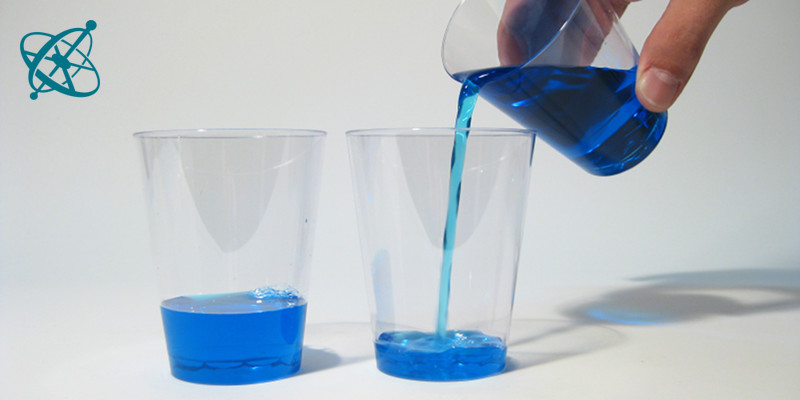
How to get 1/6 or 3/4 of a given volume with 3 cups?
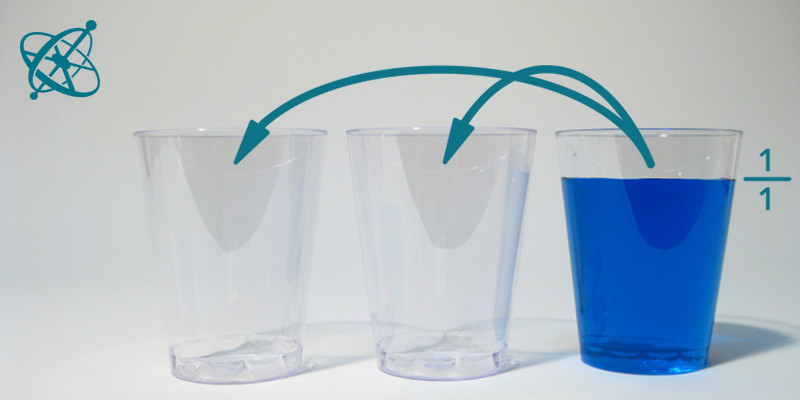
Let's start with 1/6.
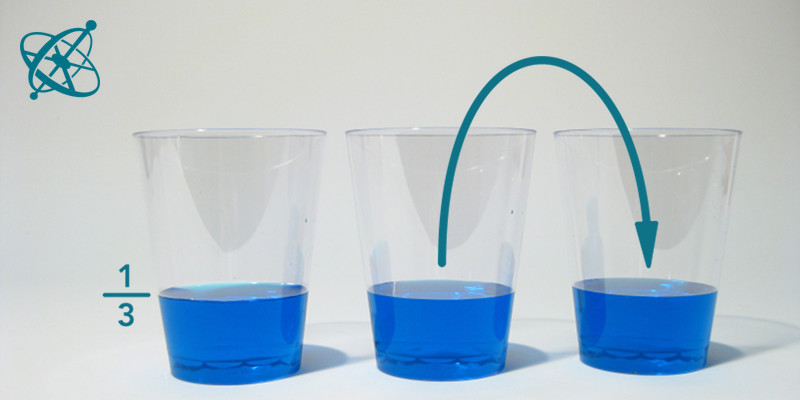
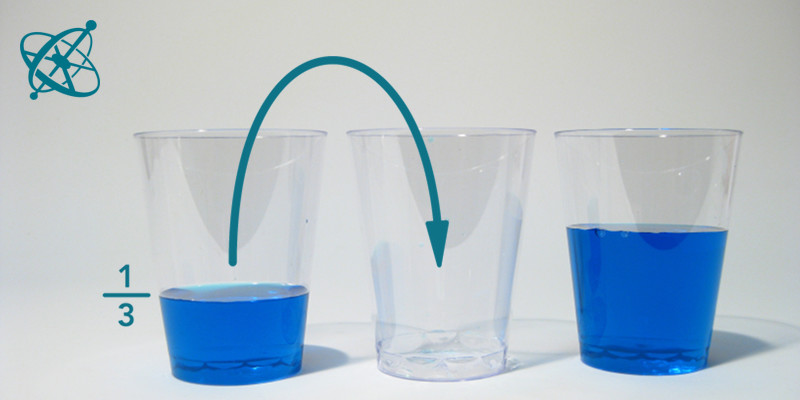
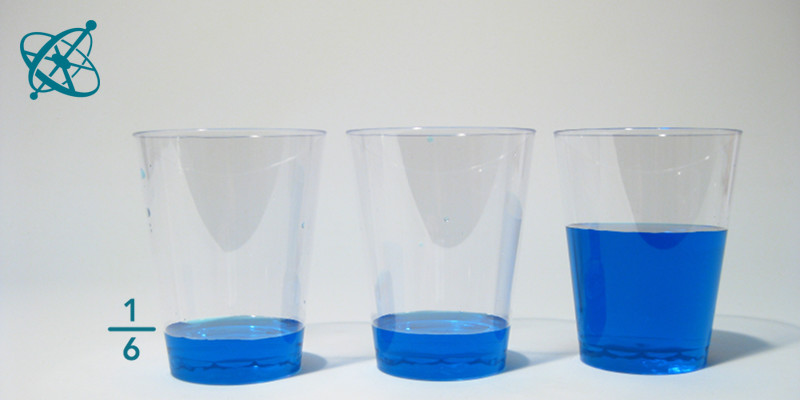
Not so difficult, right?
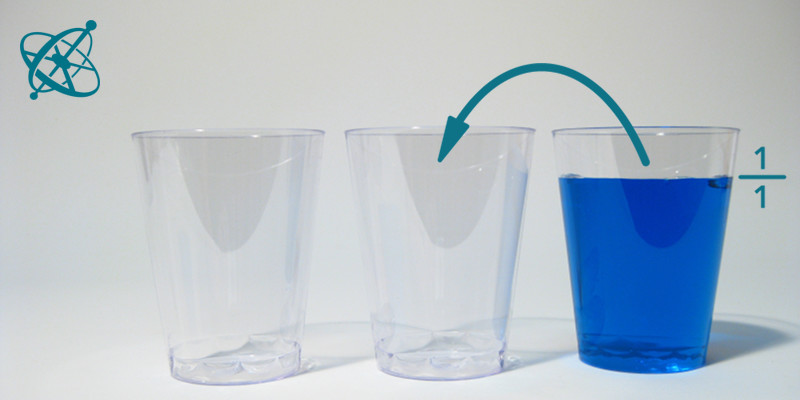
Now lets try 3/4.
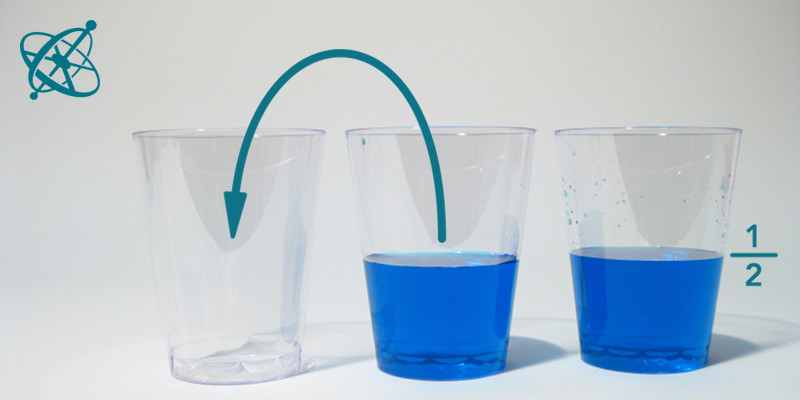
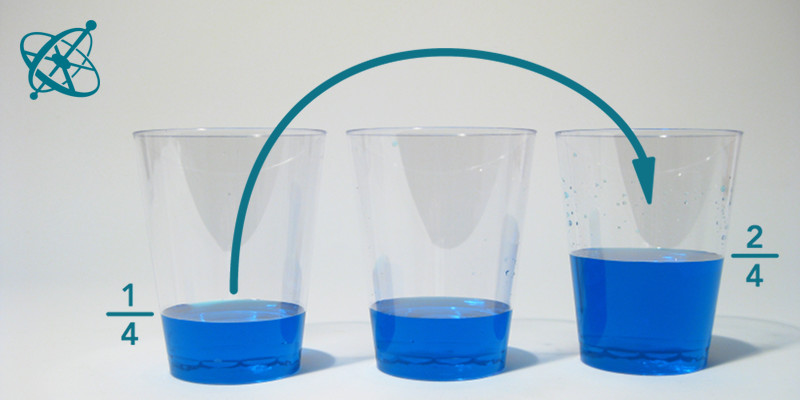
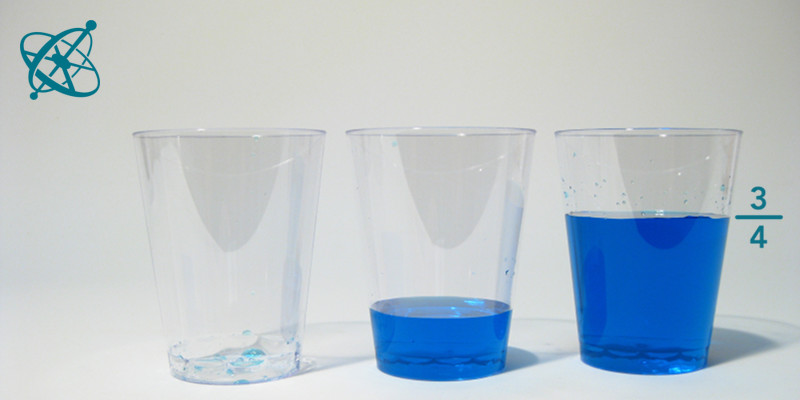
Ok, but can you get 1/5? Why not?
Liquid fractions
A simple yet memorable way to teach fractions with 3 cups and a bit of water.
Understanding fractions.
Relating mathematical concepts to real-world problems.
Water
Food coloring (optional)
Place in front of each student group 3 identical plastic cups and fill one of them up to a specific mark. Then let them work on their tasks.
Have for yourself a cup or measuring cylinder where you marked the level for 1/6 and 3/4 of the water volume you filled into the students' cups. Once a group of students thinks they have solved the 'riddle', give them your reference cup to check if they really measured 1/6 or 3/4, respectively.
You are only allowed to transfer water between the three cups.
1. Get 1/6 of the original volume of water in one cup.
2. Get 3/4 of the original volume of water in one cup.
3. Get 1/5 of the original volume of water in one cup.
Distributing the water evenly over three cups leaves each cup with 1/3 of the water. By emptying one into another and dividing the remaining 1/3 equally in two cups, you end up with two cups containing 1/6th of the original volume.
Dividing the water equally between two cups and then dividing the water in one of them with the third, still empty cup, will produce two cups with 1/4 and one cup of 1/2 of the original volume. To get 3/4, pour one of the 1/4 cups in the 1/2 cup.
To measure with the same method 1/5 of the volume, at least 5 cups are needed. It is not possible to do this with three cups since they only allow divisions by two or three. Although your students might find this question 'stupid', you can draw later on this experience when discussing common denominators.
The goal of this experiment is to link the abstract notion of fractions and their operations to a physical experience. It is therefore important to make this relation explicit in the discussion that follows the experiment, e.g. by drawing on a whiteboards the cups with their respective fill levels and the corresponding fractions and operations (division, summation).
